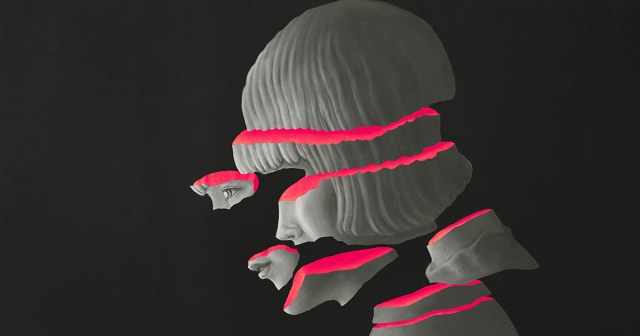
Successful social media content creators may eye the exposure of TV but if broadcasters want to work with them they need to share data and cede control.
Those were some of the perhaps surprising revelations from an NAB Show session, “Social Media/Streaming Stars on Growing Niches Into Audiences,” that brought creators together with TV executives to share learnings. Watch the full conversation below or read on for highlights.
“I think there’s a world where TV and content creators can make a lot of amazing things that aren’t being made yet,” said creator and tech reviewer Jacklyn Dallas, CEO of NothingButTech. “There’s a lot for creators to learn from TV, on how they built their brands and authenticity.”
The flip side is that creators think broadcasters can learn from them how to better connect with audiences.
“One of the big take aways is how content creators connect to an audience,” said creator Sean Sotaridona, also known as SeanDoesMagic. “If [TV execs] are able to sit down with creators, figure out what connects them to their actual core audience and then apply that to television that would be really, really good for the future of broadcasting.”
A creator with multiple millions of followers, Sotaridona was inspired to launch his career on YouTube after getting knocked out of auditions for America’s Got Talent.
“Every single time they told me ‘no,’ so I realized I need to do this myself,” he said. “I know I’m talented. I know I have the energy to grow an audience. And then from freshman year of high school I started taking social media really seriously.”
Sotaridona attributes his success to the authenticity and directness of social media’s connection with an audience, unlike TV magicians, where he said the presentation felt staged.
“Magic on social media feels more real and the reactions feel so much more genuine. I think that’s what captivates my audience.”
He added, “The beauty of being a content creator is that it’s more genuine, it feels more real. I grew up watching Dancing With The Stars, or The Bachelor but I have no idea what the host of The Bachelor [Chris Harrison] does outside of that show. If you watch a YouTube video, you can feel the actual connection and there’s more genuineness within the content.”
Yet his ambition remains to be a huge TV star. “What appeals to me about television is that it solidifies your name in the entertainment industry. TV is still a validation. I don’t think that TV will be going away anytime soon.”
Travel video journalist Juliana Broste said most content creators aimed to have their own TV show. “There’s still something so magical [about TV] that people want.”
But retaining control is considered important to creators. YouTube uber-star MrBeast just signed a $100 million deal with Amazon Prime because the streamer gave him full creative control.
“I’ve had friends get a TV contract and then they just lose so much control that they feel like they don’t own it,” said Broste. “They’re only making their day rate and they can’t control it.”
Quinn Nelson, owner and host of Snazzy Labs, said that his experience of producing slots for TV has not been positive. “What I didn’t like was that [my reports] needed to be succinct to the point where it didn’t feel substantive. And that’s a big issue.”
There’s also an issue with the pacing of traditional TV which is problematic for creator’s video communication, “and you have to cut to ads,” which is problem that doesn’t exist on YouTube.
Dallas said, “as long as there’s an alignment on creative control, and what the incentives are, then TV can be really positive.”
They all chalked up the sharing of detailed data by social platforms on viewing patterns as a key to their success in tailoring videos to the algorithm.
“YouTube gives you so much data, minute by minute analytics which traditional media does not and I feel like that type of analysis really helps you make smart choices,” said Dallas.
Sotaridona checks his metrics from YouTube and TikTok every day to see how a video performed, “what the swipe-through rate is, what’s the click-through rate on the videos. But also we don’t want the metrics to dictate everything that we post, because as a creator we have the freedom to also post what we love.
“So I have a mix of content that’s meant to go viral and content that’s also for me.”
Creators also commend the quality of partnerships they have with social media platforms, principally YouTube.
“One of the things that is unique about YouTube is that their revenue split is fifty-fifty with creators and so they’re equally as incentivized to do algorithmic recommendation on channels,” said Nelson. “It’s a symbiotic relationship. If we provide value to YouTube, then they return it in kind.
The growth of internet-connected TV could bring the worlds of TV and social media closer together.
“My perception has been that for a long time there hasn’t been much data that can be derived from television based content. Whereas on the internet side, we’ve had a wealth of information down to the millisecond about when people stop watching and why,” said Nelson.
“Now that data is coming over to the TV side. We finally have this information, so how can we use this to modify our content?
“Just be careful and remember why it is that people find what you create interesting, because data can really only do so much.”

Why subscribe to The Angle?
Exclusive Insights: Get editorial roundups of the cutting-edge content that matters most.
Behind-the-Scenes Access: Peek behind the curtain with in-depth Q&As featuring industry experts and thought leaders.
Unparalleled Access: NAB Amplify is your digital hub for technology, trends, and insights unavailable anywhere else.
Join a community of professionals who are as passionate about the future of film, television, and digital storytelling as you are. Subscribe to The Angle today!


